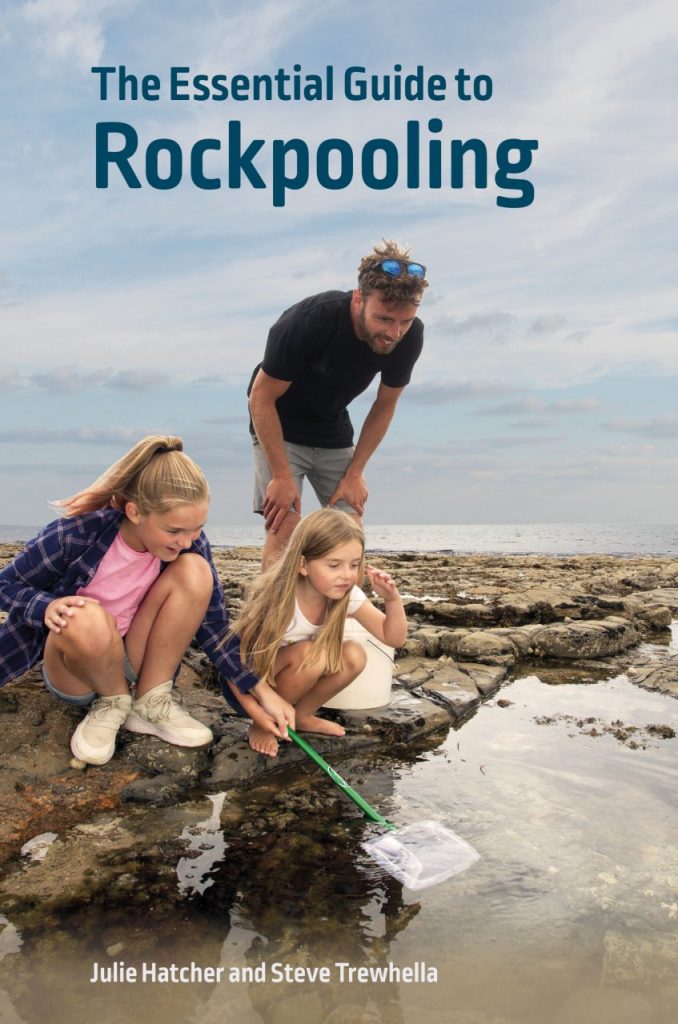
Bioblitz Battle Plymouth (July 2025)
12 Jul
2025
12:30pm to 3:00pm
March 4, 2025


Experienced ecologist and director of the Rock Pool Project. His research his covered a variety of biodiversity topics

Post-graduate researcher at the University of Exeter in Cornwall studying the St Piran’s hermit crab.

Experienced marine naturalist and citizen scientist. Associate member of the Marine Biological Association.

“Anyone with a passion for intertidal marine life.” – MP
“Anyone who loves nature or who wonders why other people love nature.” – BH
“Anyone with a passion for wildlife, especially those creatures that lay in between the tides. The writing is clear and easy to follow and could be read by nearly anyone.” – CP
“Understanding what you may see on a shore.” – MP
“Understanding and fostering a passion for exploring and learning about rock pool wildlife.” – BH
“The reader is given a detailed and passionate account of rockpool life. Unlike guidebooks which only give you fleeting descriptions of each species, this book describes what it’s like to find and discover the incredible wildlife in between the tides. The reader is guided through some of the author’s most amazing encounters, some of which are beyond belief and are bound to make the reader leap from the comfort of their chair to hurry down to their local beach for the chance to experience the same rush of discovery.” – CP
Available from September Publishing
“The theme of fascination for marine animals.” – MP
“I loved the structure of the book with each chapter a love letter to a specific species, filled with interesting facts and charming personal anecdotes, and the chapters arranged into sections based on the tidal zones. This is quite unique in my experience. The only similarly structured book I’ve read is the The Sixth Extinction by Elizabeth Kolbert, which I also found very engaging. Rock Pool is obviously far more optimistic whilst also addressing important conservation issues.” – BH
“There are some species, which given enough time rockpooling, tend to start to be overlooked. They are the most abundant and can often be thought of as mundane. However, this book rekindled a love for the ordinary rockpool creatures that I had begun to take for granted. After reading the author’s plethora of facts and tales, I now take time during each rockpooling session to appreciate barnacles and limpets for the incredible animals they are.” – CP
“The photographs and image quality let down the text.” – MP
“There wasn’t anything I disliked about this book. I would love to see Buttivant explore current conservation practises and public engagement little more critically as her extensive experience would no doubt provide some useful insights.” – BH
“The author, quite rightly, tries to draw the reader’s attention to the many crises that the oceans, and by extension rockpools, face. However, for some readers the baseline knowledge assumed will be slightly high. This book excels at bringing the plants and animals that live on our coasts to life, but for an understanding of the problems facing them, this book misses the mark on a few occasions.” – CP
MP: 7, BH: 10, CP: 8

“Marine enthusiasts, professionals, anyone who visits the shore.” – MP
“Both people who are trying rock pooling for first time and those who are experienced rock poolers.” – BH
“Identification, how to be safely on a rocky shore.” – MP
“It is great for advice on how to search for specific species. It also has some brilliant sections on rock pooling techniques.” – BH
“Everything, image quality is superb. Very comprehensive.” – MP
“The in-depth information and excellent pictures on species that are poorly covered in other books.” – BH
“No negatives for me I use it regularly.” – MP
“It complements, rather than replaces, a field guide and I still prefer to take the Collins guide into the field. The cost of having so much information per species is that not many species are covered per page, making comparisons between similar species trickier. So I prefer to keep this one at home and read it prior to going out.” – BH
MP: 10, BH: 9

“Marine biologists, students, amateur shore enthusiasts.” – MP
“People who have anything more than a superficial interest in identifying seaweeds” – BH
“Definitive shore book for algae identification.” – MP
“It’s a vital resource for identifying seaweeds in the field.” – BH
“Image quality, updated information, layout.” – MP
“Its comprehensive taxonomic coverage. The maps. The effort to give all species a common name, which helps the general public to engage with these species.” – BH
“No obvious negatives.” – MP
“I would really appreciate it if the species were organised more systematically. I can certainly see the logic of arranging species by morphology but personally I like to focus on particular taxonomic groups at a time.” – BH
MP: 10, BH: 9

“Anyone who wants to identify rock pool species in the field” – BH
“Sticking in your backpack and taking rock pooling.” – BH
“This is the best option for a general field guide, with excellent photographs for a good range of species.” – BH
“There are a few things that I prefer in the old Hayward et al. Collins seashore guide such as the formal taxonomic organisation, an easier to use index and a focus on intertidal to subtidal species. Coastal wildflowers, etc belong in a different guide and could make way for more intertidal species to make this book more comprehensive for the habitat it is mostly used for. Seaweeds are particularly poorly covered in this guide.” – BH
BH: 8, CP: 9